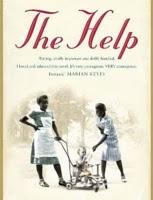The Help is an ambitious novel set in Jackson, Mississippi in the early 1960s. It encapsulates a city that was a bastion of Jim Crow racism – a phalanx of state and local laws that were designed to keep black and white people separate from cradle to grave.
The story alternates between three narrators: one a young “society lady” and two of them maids:
-Skeeter, bored and frustrated by the Junior League ladies that form her social set, is an aspiring writer who stumbles into the idea of clandestinely documenting the thoughts and experiences of her friend’s black maids.
-Minnie the firebrand who is curious about the mysterious behaviour of her new employer, and harbours a dark secret of her own.
-Abileen who showers her charges with love, often giving them more affection than they receive from their blood mothers. But as the infants grow and loose their natural colour blindness, Abileen feels the pain of seeing them taking on the attitudes of their parents.
A number of historical events are portrayed in the story, including the racist murder of civil rights activist Medgar Evers. After the death of Evers, Abileen attends the “Community Concerns” meeting at her church. Tempers run high, and a section of the flock demand something more than the peaceful protests and prayer proffered by their pastor. But such contradictions are never fully explored in the novel.
Skeeter learns a swift lesson in the dialectics of resistance shortly after a maid who has agreed to participate in the project is fired by her employer. “If the maids were afraid to help us yesterday, I’m sure they’re terrified today,” opines Skeeter. But to her astonishment, eleven fresh volunteers step forward, emboldened by a changing mood in the African American community. From then on, big changes are inevitable.
Much of the blogosphere debate about The Help has focused on the question of whether Kathryn Stockett, as a white author, can authentically write in the voice of African American characters. This controversy is an exercise in futility that ultimately leads us down the blind alley of identity politics. A more interesting investigation is to engage with the ideas that underpin the novel.
Reflecting on the results of her and the maid’s project, Skeeter, the daughter of a cotton plantation owner, concludes: “We are just two people. Not that much separates us. Not nearly as much as I’d thought.”
This thought echoes Aibileen’s opinion that: “Lines between black and white ain’t there neither. Some folks just made those up, long time ago. And that go for the white trash and the so-ciety ladies too.”
Such ideas were dangerous indeed in Mississippi in 1963. Standing up for them could result in your house being firebombed, or worse. But today, in the era of President Obama, formal legal equality is the political consensus of the age. Those once radical ideas become conservative, since they blur the very real divisions of class.
Where The Help is most successful is when it probes the relationships between individual characters. In an afterward to the novel, Stockett quotes the journalist Howell Raines:
“There is no trickier subject for a writer from the South than that of affection between a black person and a white one in the unequal world of segregation. For the dishonesty upon which a society is founded makes every emotion suspect, makes it impossible to know whether what flowed between two people was honest feeling or pity or pragmatism.”
For attempting to tackle that question, Stockett deserves a measure of praise.

